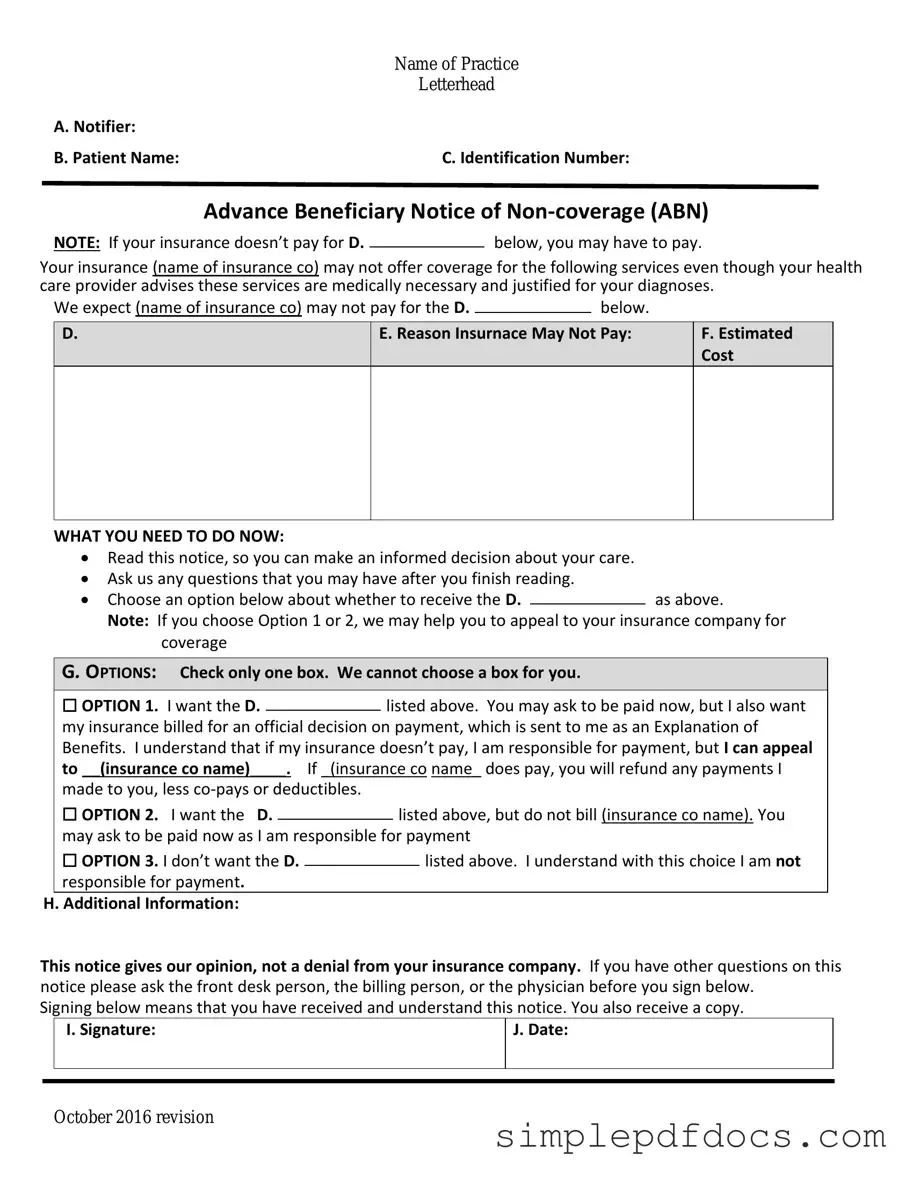Fill Your Advance Beneficiary Notice of Non-coverage Form
The Advance Beneficiary Notice of Non-coverage (ABN) is a crucial document used in the Medicare system to inform beneficiaries that a service may not be covered by Medicare. This notice allows patients to make informed decisions about their healthcare options and potential out-of-pocket costs. Understanding the ABN is essential for navigating the complexities of Medicare and ensuring access to necessary medical services.
Get Document Here
